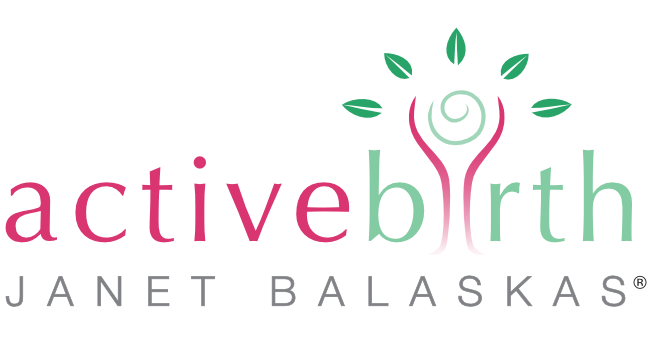Can you tell me how to do perineal massage?
Carrying on with the theme stimulated by Irene’s question – How to prevent a tear during the birth? – this newsletter gives you the method for the age-old tradition of perineal massage in late pregnancy. At the time, nature will provide all the lubrication and stretching you need, but many swear by the effectiveness of this massage and there is quality research that shows there are real benefits, especially for first time mums.
Perineal Massage for the last month of your pregnancy
Many women report a noticeable change in the stretchability of the perineum after starting this massage and midwives often comment on the benefits during birth. Research indicates that perineal massage can increase muscle and tissue elasticity and help to decrease the risk of tearing and the need for an episiotomy and may reduce perineal pain after birth.
As I explained in my last newsletter, the perineum includes the skin and muscles between the vagina and the anus. When your baby’s head ‘crowns’, the perineum will naturally soften and stretch as the pressure from the baby’s head stimulates the release of the softening hormone prostaglandin in the tissues. Given time and patience, it will become as thin as a membrane and slip over the baby’s face, releasing the head during birth.
This massage helps to prepare these tissues for the stretching that occurs as your baby is born. You can do the massage yourself, perhaps with the aid of a mirror, or your partner could be the masseur.
Pick a time of day when you are relaxed and free from interruptions. You or your partner should first clip and file all your fingernails and
wash your hands well. An ideal time to do the massage is after a warm bath.
You will need
-
- Lubrication: a little warm organic unscented oil such as sweet almond or sunflower seed (provided you are not allergic to almonds or sunflower seeds) or a light olive oil. If you are sensitive to these, you can use a water-soluble lubricant gel. Do not use baby oil, mineral oil, or petroleum jelly.
- Plenty of pillows
- A mirror if you wish to see what you are doing.
Perineal Massage Technique
Self-massage
Your position: Stand with one foot raised and resting on edge of the bath or a chair or kneel upright with one knee bent and one foot flat on the floor in a soft lunge position. You can use a mirror underneath you to see what you are doing. It will be easiest to massage with your thumb.
Pour about 2 tablespoons of oil into a saucer. When you are relaxed and ready, dip two fingers and your thumb in the oil. Slowly and gently insert your thumb – no more than 1-2 inches – into the entrance of the vagina (a maximum of up to the joint) of your thumb with your fingers on the outside of the perineum. Knead the skin of the perineum gently between your thumb and forefingers, liberally spreading the oil.
First, feel if the perineal muscles are relaxed, then breathe deeply, relax and consciously ‘let go’ of these muscles. If you can’t tell if you are relaxing, tighten with a pelvic floor exercise then let go and relax.
Technique: The massage itself involves a slow, rhythmic, gentle pressure down towards the floor and out along one side of the perineum toward the bent leg. Do one side at a time when massaging yourself. Change legs with the other knee up and do the same on the other side. Be sure that you are using plenty of oil to avoid uncomfortable friction on the skin. Repeat slowly several times.
You should feel a mild tingling or stretching sensation. Use enough pressure to be giving a gentle stretch, but no pain.
Try using more oil, going slower or more gently if there is discomfort, or stop and try again next time.
Breathe evenly and relax throughout, improvement will come with time, as the massage becomes more familiar.
Partner massage
Traditionally, in many cultures the midwife used to do this in the weeks prior to the birth and this role can be taken on by the partner. A slow pace, gentle touch and feedback are helpful here.
Relax comfortably in a well propped up semi-reclining position with a towel underneath you and your back, neck, head, and each thigh well supported by pillows. With legs apart, place a pillow under each knee. Your partner can kneel or sit in front of you. Work with both hands using the index and middle fingers or both thumbs. Stay in the lower part of the vaginal opening and pull the skin gently down towards the back passage and out to the sides (as the baby’s head will do) if you are using both thumbs. Remember the shape is like a smile!
Or using one hand at a time, make a sweeping motion moving from 3 o’clock, pressing down to 6 o’clock and up to to 9 o’clock and back again – like a smile!
Work very slowly checking in to make sure she is comfortable.
Breath evenly and relax while giving and receiving this massage.
Timing
You can start any time from 35 weeks and do the massage once a day, 2-3 times a week and then every other day in the last two weeks before your due date up to the birth.
Gradually increase the time of the massage from 1-5 minutes. These are guidelines, so do what is most comfortable for you, but the research shows that there is no benefit in doing this more often than I have recommended.
Benefits of this massage
These include stretching and increasing the elasticity of the perineum and vaginal opening as well as teaching the mother to actively relax her perineum while there is a sensation of pressure on it, as there will be when
the baby’s head begins to crown during birth.
Perhaps the greatest benefit is to become familiar with touching this part of your anatomy and increasing your ability to be patient, relax and breath as it stretches spontaneously during the birthing without any forceful pushing.
What else can help to prevent tearing?
There is some evidence that a warm compress applied to the perineum as the head is being born can reduce the risk of trauma by increasing blood flow to the area. The warmth provides relief. This should not be necessary unless the perineum seems unusually tight. Discuss this with your midwife in labour. A quick and easy compress can be made by holding a sanitary towel under a hot tap and squeezing out the water.
Above all, being patient and resisting the temptation to push forcefully will help at this stage and most midwives will encourage you to breathe lightly and direct you.
CAUTIONS!
• Do not do perineal massage if you have thrush, herpes, or any other vaginal infection.
• Discontinue if the waters break or leak, or if labour starts.
Disclaimer
Active Birth is designed for mothers who wish to give birth naturally and have had a healthy pregnancy and no medical complications during labour and birth. Aspects of an Active Birth can also sometimes be used in combination with medical interventions. The website and newsletters offer general information only. They are not a substitute for the professional advice, diagnosis or treatment offered by your midwives or doctors. The Active Birth Centre/ Janet Balaskas in general, accept no liability for the guidance herein, and advise that you do not disregard professional medical advice and inform yourself with other trusted evidence-based sources of information when making your decisions.

